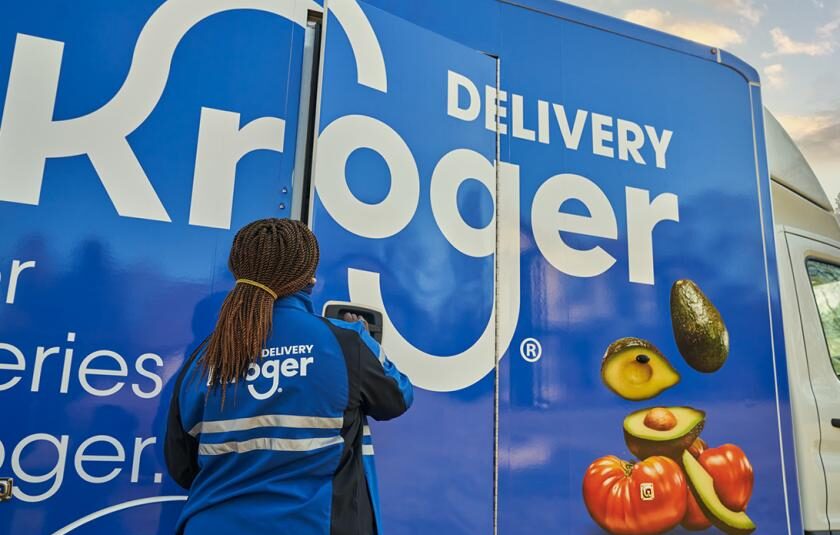
4 Ways to Reduce the Impact of Food Inflation on Consumers — Without Cutting Your Prices
To cope with spiraling food costs during the inflation crisis, consumers are doing two things. First, they’re finding different, cheaper supermarkets, like Lidl, Dollar General, Food4Less and Family Dollar. This means higher-end retailers like Sprouts, Wegmans, Fresh Market, Harris Teeter and Publix are lagging behind in in-person visits.
Secondly, consumers are buying private-label items. When off-brand products offer such low price points, can you really blame them?
While consumers can postpone purchases of many nice-to-haves to offset the high costs of consumer goods, food is a non-negotiable. They can’t stop grocery shopping altogether, but they can change their behaviors to keep feeding their families without breaking their budgets.
So, where does that leave you?
Well, it means your CPG team has to get a little more creative about how you promote the value of your products. This requires a little empathy on your part to anticipate the motivations and needs of your consumer.
Let’s take a look at how retailers are adapting to inflation stresses and how you can take a page from their playbook.
How CPG brands can show empathy with consumers over price increases
The reality is, there’s little your team can do to reduce the price point of your products. If anything, you may be facing pressure to raise prices. Rather than competing on pricing, you’ll need to find other ways to convince consumers your brand is worth buying. Which means you’ll need to emphasize other aspects of value.
Lean into Online Ordering and in-store Pickup
Services like Instacart are nothing new. And even though the risk of in-person shopping has decreased since the start of the pandemic, what was once a necessity is now an ingrained habit. It’s simply more convenient to have groceries delivered, or to swing by the store to pick them up after placing an online order.
There’s an opportunity here for your company to emphasize the value of your product during a customer’s online ordering and in-store pickup experience. For instance, earlier this year, Publix and Instacart unveiled a new beta service promising 15-minute grocery deliveries in Miami. Kroger has also expanded their fresh delivery capabilities in Colorado with the addition of a fifth fulfillment center. In other words, retailers are starting to offer a much wider selection of items for quick delivery and pickup — and yours could be in the mix.
And don’t forget impulse purchases, either! Retailers have come up with clever ways to encourage shoppers to think outside their shopping list. If you’re on a CPG team, you can take advantage of features like banner ads on Instacart that promote last-minute purchases to shoppers’ carts. In the same way that a shopper might add a bottle of wine or a bar of chocolate to their basket while waiting in the cashier line, these ads can catch shoppers before they check out.
Reach In-Store Shoppers
For those customers who prefer shopping in-store, retailers are going out of their way to ensure a pleasant shopping experience. Case in point: Target has remodeled 1,000 of its stores with plans for 400 more in the coming year. And it’s paid off. Remodeled stores are showing a +2% to +4% bump in sales in the year post-remodel. Even their pick-up orders are growing, with expanded drive-up capabilities included.
This is a boon for many reasons, but mainly because it creates more opportunities to showcase the value of your products, and encourages purchases that aren’t confined to a grocery list. For a CPG team, it would be wise to revisit in-store marketing that you most likely deprioritized during the pandemic, like endcaps and shelf talkers. You have an opportunity here to play up the value of your products in person, in addition to online.
Appeal to Your Consumers’ Values
Aligning your marketing efforts to your customers’ values is an effective way to communicate consumer empathy. And it’s increasingly important in today’s world, where younger consumers are more interested in brands that align with their sense of social responsibility, whether it’s to combat racism, climate change, or poverty. These consumers expect companies to take a stand on issues that matter to them.
Many CPG teams have already taken the cue to feature their product’s climate-friendly virtues on the packaging. “100% recycled materials,” “sustainably farmed,” “organic,” and “non-GMO” are just some of the bursts you might see on a label. But telling the story of the product, say, the partnerships the company has with local farmers, can go a step further to emphasize the product’s alignment with consumer values.
Another example of companies appealing to customers’ values is how PepsiCo Inc. the parent company of Quaker Oats, resolved the controversy over its pancake and syrup brand Aunt Jemima. Amid protests against racial injustice in the summer of 2020, Pepsi announced it would rename Aunt Jemima to Pearl Milling Company and retire the racist stereotype used for the product’s image. Uncle Ben’s, Cream of Wheat, and Mrs. Butterworth’s have announced similar rebranding efforts as well.
It’s important to make decisions to reflect your customer’s values, and more and more, customers are making purchases that support issues they care about.
There’s an alternative to lowering your prices
Of course, the most direct way to empathize with consumers’ struggles with higher prices is to…cut prices. Aldi recently announced price cuts on some of their most popular items through the end of the year. Not to be outdone, Lidl recently offered a Thanksgiving dinner that feeds ten people for $30. Around the holidays, especially, consumers are on the hunt for great deals.
If slashing prices isn’t feasible for your products, there are alternatives. For example, CPG teams can offer bundled packs of goods at a lower unit price. This obviously appeals to customers who are scouring the shelves for deals. But another benefit is that it lengthens the shopping cycle. The opportunity for the consumer to buy an alternative brand is delayed.
It’s Time to Get Creative
There are many ways you can adapt your products to the needs and motivations of your consumer base during the inflation crisis. Even better, you can do this while still protecting the bottom line, and maintaining (or increasing) brand loyalty.
Partnering with an advertising agency can help you come up with creative solutions to complex problems. Ready to talk about your retail needs? So are we.





